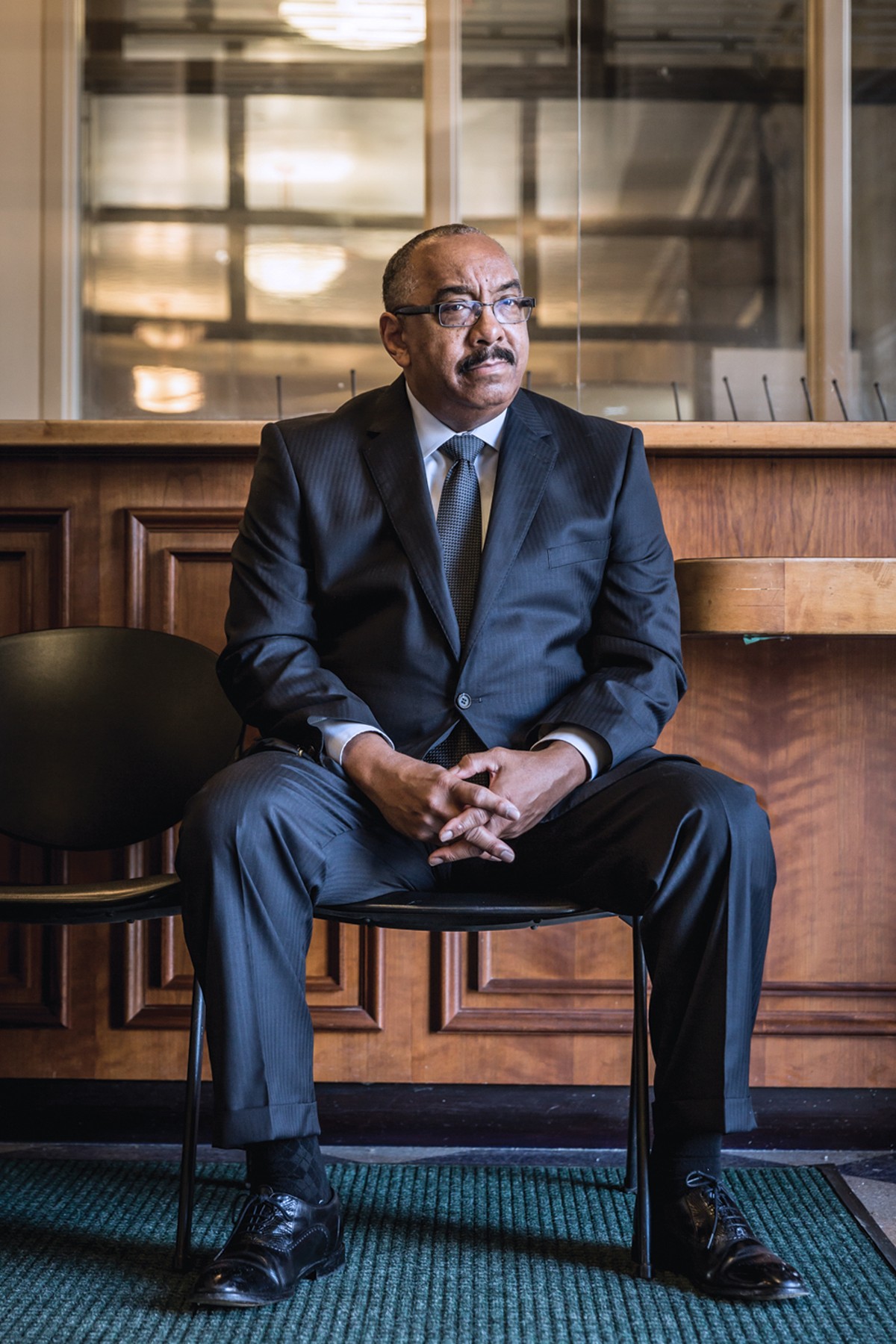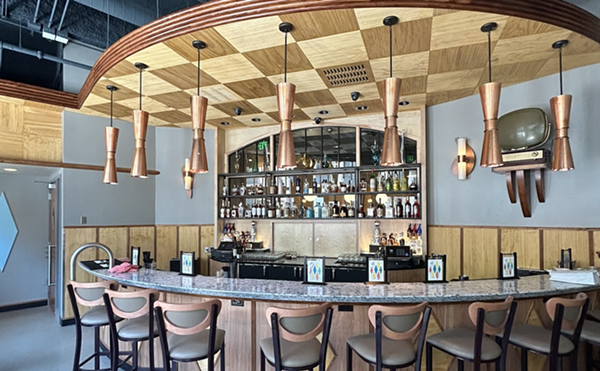As "Midtown" goes through publicized, celebrated convulsions of glitzy redevelopment, it's easy to forget that, once upon a time, it was called the university district. It's also relatively easy to overlook one of the humbler foundations underpinning all that redevelopment: Wayne State University's police department. The force's quick response times and commitment to public safety have constituted an increasing counterweight to crime in the area. And given a city police force that's often stretched to the limit, who knows how many developers and business owners might have spent their money elsewhere if not for Wayne's small but speedy contingent of officers.
One of the leading lights helping Wayne State University's police punch above their weight is WSU Police Chief Tony Holt. Since he was instated in 2009, he's worked relentlessly to analyze crime, establish partnerships, and involve the community. That's meant drawing together the various security fiefdoms to share resources and information at COMPSTAT meetings every other week.
"Everything is data-driven," he says. "When I started as chief, we met in this room with about four or five people. Now there are 40 people in attendance every other Wednesday."
Holt's meetings now include representatives from the Detroit Police Department, Wayne County Sheriff, and security directors from the Department of Education, the Detroit Institute in Arts, the Detroit Medical Center, Henry Ford Hospital, the College for Creative Studies, and several other high-profile groups in the vicinity.
All those working relationships with other security forces don't just help keep the campus safe; Holt wants to make sure everybody benefits. The goal isn't just to shift crime to another neighborhood, but to catch the criminals. That's more likely to happen when security is coordinated.
"Two guys on a bicycle robbed somebody right at Cass and Kirby," Holt says. "With our video, we got a good picture of it. I gave the picture to everybody at the COMPSTAT meeting. Henry Ford calls us and says, 'We're holding two guys who fit the description.' We drive up, those are the two guys and they were picked out of a lineup. It just shows what this collaboration does when we all work together."
Some crimes, of course, are the sole purview of DPD: homicides, sex crimes, barricaded gunmen, narcotics raids. But Holt cultivates an inside track with other jurisdictions by sharing resources: He has Wayne State officers assigned to a DPD's carjacking and homicide units, and another with an FBI task force. He even lets a Department of Corrections officer borrow an office right in his station. "They're required to do home visits," Holt says, noting the prospect can be intimidating in some instances. "We send three officers and maybe a canine with him," he says. "That's a great partnership."
On paper, Holt says, his area is bounded by Lothrop, Simpson, I-75, and 14th Street. That said, all his police officers are sworn in by the city force, and can make an arrest almost anywhere in the city. And they frequently do.
"I go where I'm needed and where the issue is," Holt says. "This is an open campus. And, we encourage people to walk on campus, live on campus, go downtown, go to restaurants in Midtown. To have people do that, we need a safe environment."
If that means telling Woodbridge residents he'll dispatch a uniformed officer to observe them as they leave their homes between midnight to 5 a.m., that's what he'll do.
"We haven't had a carjacking since we started that project," he says, beaming with pride.
The university's resources have helped Holt not just with expertise in data management, but in surveillance. The first floor of Wayne's cop shop has a room outfitted with panels of flatscreen monitors, showing feeds from cameras all over the mid-city area.
Even Wayne's phones are being upgraded with cameras, so "when you pick up a call, I'm looking at you. You gotta keep adding this technology."
And yet despite all the high-tech gadgets and gizmos at his department's disposal, he's aware of the value of individual police doing the work and checking in with residents. As matters come up for discussion, he pulls out his phone and communicates directly with the officers responsible for the details he's discussing. Though he often he ends the call with a friendly reminder of what needs to be done, it doesn't come off as "micromanaging," but a helpful query from above about whether tasks are complete.
And few people have as deep and wide a knowledge of the neighborhood as Holt. Though it's his disposition to hire police who want to move on to bigger and better things, he's practically a lifer, a top cop with 40 years on the job in his old stomping grounds. He fondly recalls the days "when the Cass Corridor was really the Cass Corridor," with memories stretching back into the 1960s, when he was a teenager living on Prentis and working at Oklahoma's gas station on Second and Alexander. In fact, there doesn't seem to be a shop, bar, or restaurant you could name from years past that won't provoke warm reminiscences.
Underneath the snappy statistical analysis, administrative savvy, and technological capability, Holt seems very much a likable neighborhood guy. You can see why he enjoys not just glad-handing the shop owners, investors, and executives, but taking their side, helping ensure their neighborhood is prosperous and peaceful, and that nobody escapes justice.
"I could always just put six officers to just circle the block, make it too hot to work," he says. "But the idea is to catch the bad guy."
He adds with a laugh, "We have plenty of room. Our jail is so nice, you won't want to leave it."
Back to the People Issue.






